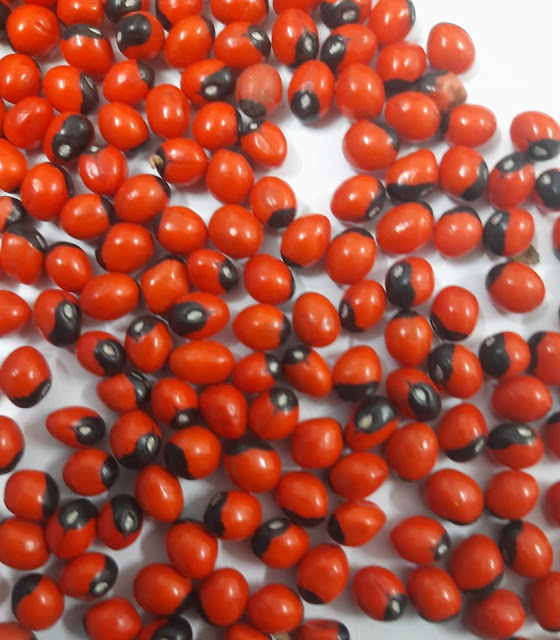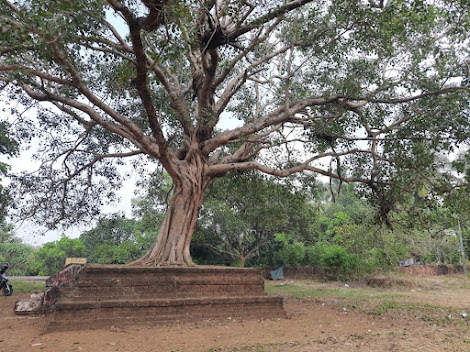9 year old girl
2nd child born out of non-consanguineous marriage with uneventful antenatal history, with a birth weight of 2.5 kg with nohistory of NICU admission was discharged on post natal day 2.She was readmitted with frequent episodes of non bilious vomiting and Jaundice on post natal day 3 and diagnosed as duodenal web.
Duodeno-duodenostomy was done.
She was found to have some dysmorphic facial features which were subtle. Noticeable one was bifid thumb on left hand.
There was no significant malformations in the family.
She was found to have abnormal cardiac findings on follow up, was investigated and found to have Osteum secundum ASD 8mm size.
She was breast fed , was
attaining weight and her developmental milestones at par with her peers.
At 4 years had and episode of hematemesis
There was no other bleeding manifestations other than malena which followed next two days.
At admission her vitals were stable,no features of hepatic encephalopathy
No stigmata of liver disorders.
No jaundice ,No clubbing, No lymphnodes.Her growth parameters were normal
On examination
found to have pallor.
Per abdomen
No dilated veins.
Spleen was palpable five cms,firm.Liver just palpable.normal in consistency. No free fluid.
Auscultation doubtful bruit.
Provisional daignosis prehepatic portal hypertension.
Investigation ( Doppler USG showed cavernous malformation, Oesophagoscopy showed gastropathy and varices.
Started on Propranolol titrated dose 1mg/kg since then,
After one
year she again had another episode of hemetemesis and was controlled with blood transfusion and Octreotide.
Repeat scopy showed Gr 2 ,3 Esophageal varices.
Endoscopic variceal ligation was done.
Within 1 year of banding child again had third
episode of hematemis and presented in shock which again was managed medically.
Over past 2 years child was
asymptomatic.
On 29 th of August 2018 ASD closure was done with device.
Following device closure they use to put on dual medications Aspirin and Clopidogrel
Here before this decision was taken multiple consultants were involved in decision making.
She was a proved case of Portal hypertension.
When a patient diagnosed as portal hypertension is being discharged we ll be doubly cautious to avoid over the counter medication with special stress on medications for pain and fever. Many cases of Upper GI bleed occurred as patients were not properly advised or their mistake of ignoring this warning.
She was a proved case of Portal hypertension.
When a patient diagnosed as portal hypertension is being discharged we ll be doubly cautious to avoid over the counter medication with special stress on medications for pain and fever. Many cases of Upper GI bleed occurred as patients were not properly advised or their mistake of ignoring this warning.
Here decision was not a simple one.Following interventional closure there is chance of embolism.Usually dual therappy is advised.
Here putting on aspirin is risky.
Here putting on aspirin is risky.
Experts took a decision to put on both drugs as she was totally asymptomatic for the last few years.
Esophagoscopy done two months before exculded significant varices.She was put on aspirin and Clopidogrel one day before intervention.
Next day following the procedure child had 2 episodes of massive hemetemesis.
Bleeding was severe. revived with transfusions.
Child was
again taken up for banding..
Aspirin was discontinued within 2 days and changed over to Clopidogral .
Propranolol was continued as earlier for prophylaxis in portal hypertension
Child later became hemo dynamically stable and was discharged home.
Aspirin was discontinued within 2 days and changed over to Clopidogral .
Propranolol was continued as earlier for prophylaxis in portal hypertension
Child later became hemo dynamically stable and was discharged home.
New turn of events
At home after 12 days of
procedure she was noticed to have drooling of saliva with defective
swallowing. It must have occurred gradually.
Had reduced word output with low intonation.She responds but sound was feeble.Child was able to comprehend commands and conversations.
No history of nasal regurgitation, nasal twang or aspiration of feeds .
Child was also noticed to have difficulty in taking the food to back of mouth with the tongue.
No h/o emotional instability.
Child had no complaints of headache/ vomiting/ weakness of any limbs/involuntary movements.
No nasal regurgitation of fluids
She was taking her hands to the throat when small amount of food offered.
Considered possibility of hydrophobia but features were not fitting. and the possibility of exposure remote
Considered possibility of tetanus, but there was no trismus, By the time difficulty in swallowing occurs in tetanus we get trismus and facial grimace.
Cranial nerves
alfactory not tested, vision normal pupils normal size and reaction , fundus normal3,4,6- were normal.complete movement no nystagmus
Trigeminal not able to clench teeth
Corneal conjunctival reflex +
Facial – NOT ABLE TO RAISE HER EYEBROWS OR BLOW OUT
Response smiling was intact but on command facial movements were absent.
Response smiling was intact but on command facial movements were absent.
CN 9,10 -palat movement was sluggish. gauge reflex present.
Hypoglossal - Not able to protrude tongue
Tone in the limbs and Deep tendon reflexes in the limbs were normal.Plantar flexor,
Doubtful dystonic posturing of lower limbs,but no abnormal movements
She could sit up and stand with assistance
Child was noticed to have a peculiar gait of high stepping gait with no falls.
She responds to pain. Other modalities of sensation difficult to test.
Spleen palpable 5cm, firm
Gastro intestinal system
No distention no dilated veins
Liver not palpable,no free fluid.
Cardiovascular system
All peripheral pulses palpable. No bruit over carotids
Second sound split ,Short systolic murmur at pulmonary area.
Dilemma here
A patient who underwent a procedural closure who did nt get ideal prophylaxis for thrombo embolism develops neurological findings with features of lower brain stem cranial nerves first possibility is stroke. brain stem stroke.
If so ?
What is the anatomical location of lesion which can explain bilateral pharyngeal involvement, sparing long tracts? Which vascular territory?
If one sided it was easy to explain
Bilateral ?
medial medullary syndrome possible with an unpaired branch deep penetrating supplying both pyramidal with hypoglossal But here pyramidal signs not there.and predominant findings are phyaryngeal which occur only when the lesion is lateral . In that case bilateral involvement is difficult
One more point, features looked more of UMN than LMN
So what possibility?
We considered one possibility of Opercular syndrome few of the features were fitting with this
Any way
One thing was certain at this stage.
This must be a stroke. She is only on Clopidogrel .Is it safe to continue this singel drug here ?
Aspirin should be added .
But , just two weeks back, she just escaped from massive hemetemesis.
What to do ?
So far only clinical thoughts and possibilities.
Without a proof we cant take a decision on a dangerous move.
Our plan was
- To arrange MRI ,for a proof of stroke
- To arrange a oesophagoscopy to check the status of varices , if significant ones ligate.
MRI was arranged next day







Now where are we?
We expected a vascular pathology , But ...
Bilaterally symmetrical basal ganglia lesions,not suggestive of ischemia .
Possibilities considered were
- Metabolic
- Mitochondrial
- Parapontine demyelination
- ADEM
She had a stormy period following intervention days.
- Whether the stress triggered a metabolic problem?
- Whether hepatic encephalopathy cause a picture like this
- Whether electrolyte imbalances which happened during that period lead to parapontine demyelination
Out of this we considered possibility of metabolic problem as most likely
Impericaly she was put on Thiamin,Pyridoxine, Coenzyme Q
Other possibility of mitochondrial disorder suspected.
Lacic acid and ammonia normal
She improved over the last five days.
Today she is discharged
- We are continuing the above vitamins, Propranalol and Clopidogrel
- We did nt do repeat Oesophagoscopy
- We did nt put on Aspirin
So what is final diagnosis
i dont know
One points makes us happy
In spite of all the dilemmas, explained them at each stage their faith in us,in spite of our resource poor settings and facilities.
( Thanks to my friend Dr Elizabeth Preethi Thomas for her help in preparation of this discussion)
( Thanks to my friend Dr Elizabeth Preethi Thomas for her help in preparation of this discussion)
Follow up as on 8/10/2018
She was on Biotin , Thiamin ,Pyrodoxin and Coenzyme Q.in addition to propranalol and clopidogrel which are meant for her heart condition and portal hypertension
In the OP we saw her . she recovered fully now
She was on Biotin , Thiamin ,Pyrodoxin and Coenzyme Q.in addition to propranalol and clopidogrel which are meant for her heart condition and portal hypertension
In the OP we saw her . she recovered fully now
We stopped all the vitamins and decided to follow up



👍
ReplyDeleteASD plus thumb anomaly will make me think of Holt Oram syndrome..basal ganglia lesion can be explained by portal hypertension..the varices or anastomosis helps in escape of toxic metabolites to brain that can cause basal ganglia damage
ReplyDeletepossible
Deletesir, any issues with sodium levels while she had gi bleed?
ReplyDeleteValues of electrolytes done from our institution was normal.
DeleteDont know whether there was any electrolyte abnormalities during the days following ASD closure and hemetemesis